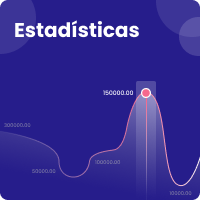Internet of medical things and coding as a service (IoMTCaaS) for monitoring people affected by Covid-19
DOI:
https://doi.org/10.26507/paper.2135Palabras clave:
Middleware, RLNC, Random Lineal Network Coding, IoMT, Internet of Medical Things, COVID-19, 5G-IoTResumen
Con la necesidad cada vez mayor de recursos computacionales y de transferencia de datos que exigen los servicios de telemedicina, no es realista que los dispositivos médicos móviles (IoMT, Internet of Medical Things) locales (con fuentes limitadas) implementen el procesamiento intenso de la información a gran escala para el envío continuo de los datos sobre una red inalámbrica móvil. Hablamos de la adquisición y envío de datos sanitarios móviles a través de gadgets médicos wearables y de la aplicación de estos datos en la monitorización de diversas condiciones de salud, especialmente en pacientes afectados por el COVID-19 en áreas remotas y de difícil acceso. Un monitoreo remoto permite la obtención de variables biométricas como el nivel de oxigeno en sangre, el ECG, la presión sanguínea, el asma, etc. y otros servicios relacionados con la atención medica como la videoconferencia. El rendimiento del sistema es muy importante para el sistema de salud móvil basado en el IoT. Por ello, los particulares o las empresas se inclinan por externalizar sus necesidades de envío de datos y generación de servicio a través de soluciones cerradas que exigen un consumo significativo del ancho de banda. Sin embargo, con la gran cantidad de recursos compartidos en el ancho de banda, la externalización conlleva a problemas de retardo y rendimiento del sistema, lo que hace que se genere un aumento del consumo energético producto de los errores del sistema, algo no ideal para dispositivos IoT. Recientemente, se han llevado a cabo numerosos trabajos basados en la codificación distribuida de ultima generación en la universidad americana. El objetivo es desarrollar un mecanismo (Middleware) complementario de codificación (RLNC, Random Lineal Network Coding) controlado desde la capa de aplicación, el cual permite reducir los errores del sistema y por consiguiente minimizar los tiempos de la comunicación en dispositivos médicos 5G-IoT. El esquema planteado basado en los códigos rateless, es un proceso de baja complejidad que permite subsanar fallas originadas por las variaciones del canal inalámbrico, como consecuencia garantiza un mínimo retardo sobre la red, especialmente en aquellas con poca cobertura, ubicadas en zonas remotas y de difícil acceso.
Descargas
Citas
Zhimin G, Zhuo L, Jiaxuan F, et al. Research on security hardening technology of container image File configuration for power intelligent IoT Terminal. In: 2021 IEEE Sustainable Power and Energy Conference (ISPEC). IEEE; 2021. Accessed June 4, 2022. https://ieeexplore.ieee.org/document/9735992/
Sanabria-Russo L, Pubill D, Serra J, Verikoukis C. IoT Data Analytics as a Network Edge Service. In: IEEE INFOCOM 2019 - IEEE Conference on Computer Communications Workshops (INFOCOM WKSHPS). IEEE; 2019. Accessed June 4, 2022. https://ieeexplore.ieee.org/document/8845207/
Cheng B, Papageorgiou A, Cirillo F, Kovacs E. GeeLytics: Geo-distributed edge analytics for large scale IoT systems based on dynamic topology. In: 2015 IEEE 2nd World Forum on Internet of Things (WF-IoT). IEEE; 2015. Accessed June 4, 2022. https://ieeexplore.ieee.org/document/7389116/
Rattanapoka C, Chanthakit S, Chimchai A, Sookkeaw A. An MQTT-based IoT Cloud Platform with Flow Design by Node-RED. In: 2019 Research, Invention, and Innovation Congress (RI2C). IEEE; 2019. Accessed June 4, 2022. https://ieeexplore.ieee.org/document/8999942/
Kim S, Kim C, Kim J. Reliable smart energy IoT-cloud service operation with container orchestration. In: 2017 19th Asia-Pacific Network Operations and Management Symposium (APNOMS). IEEE; 2017. Accessed June 4, 2022. https://ieeexplore.ieee.org/document/8094152/
COVID-SAFE: An IoT-Based System for Automated Health Monitoring and Surveillance in Post-Pandemic Life | IEEE Journals & Magazine | IEEE Xplore. Accessed March 29, 2021. https://ieeexplore.ieee.org/document/9220167
Ting DSW, Carin L, Dzau V, Wong TY. Digital technology and COVID-19. Nat Med. 2020;26(4):459-461. doi:10.1038/s41591-020-0824-5
Roy IP, Rahman M, Hasan M, Hossain MS. IoT-based COVID-19 Suspect Smart Entrance Monitoring System. Proc 5th Int Conf I-SMAC (IoT Soc Mobile, Anal Cloud), I-SMAC 2021. Published online 2021:11-19. doi:10.1109/I-SMAC52330.2021.9641016
Kwon M, Park H. Distributed Topology Design for Network Coding Deployed Large-scale Sensor Networks. Published online 2017. http://arxiv.org/abs/1712.00631
Tansangworn N. Development of IoT Edge Hub for Wireless Sensor Networks based on Docker Container. In: 2020 IEEE International Conference on Smart Internet of Things (SmartIoT). IEEE; 2020. Accessed June 4, 2022. https://ieeexplore.ieee.org/document/9191990/
Bedhief I, Kassar M, Aguili T. SDN-based architecture challenging the IoT heterogeneity. In: 2016 3rd Smart Cloud Networks & Systems (SCNS). IEEE; 2016. Accessed June 4, 2022. https://ieeexplore.ieee.org/document/7870558/
Zourmand A, Hing ALK, Hung CW, AbdulRehman M. Internet of Things (IoT) using LoRa technology. In: 2019 IEEE International Conference on Automatic Control and Intelligent Systems (I2CACIS). IEEE; 2019. Accessed June 4, 2022. https://ieeexplore.ieee.org/document/8825008/
T M, T A, M A V, M DK, G R. IoT and LORA Based Substation Monitoring and Control System. In: 2021 6th International Conference on Communication and Electronics Systems (ICCES). IEEE; 2021. Accessed June 4, 2022. https://ieeexplore.ieee.org/document/9489173/
Leonardi L, Battaglia F, Bello L Lo. RT-LoRa: A Medium Access Strategy to Support Real-Time Flows Over LoRa-Based Networks for Industrial IoT Applications. IEEE Internet Things J. 2019;6(6). Accessed June 4, 2022. https://ieeexplore.ieee.org/document/8845658/
Zhang C, Wang L, Jiao L, Wang S, Shi J, Yue J. A novel orthogonal LoRa multiple access algorithm for satellite Internet of Things. China Commun. 2022;19(3). Accessed June 4, 2022. https://ieeexplore.ieee.org/document/9745442/
Nugraha AT, Wibowo R, Suryanegara M, Hayati N. An IoT-LoRa System for Tracking a Patient with a Mental Disorder: Correlation between Battery Capacity and Speed of Movement. In: 2018 7th International Conference on Computer and Communication Engineering (ICCCE). IEEE; 2018. Accessed June 4, 2022. https://ieeexplore.ieee.org/document/8539316/
Incháustegui CIR, Rodríguez F, Gutiérrez S. Development and Testing of Gateway LoRa for Cloudino IoT Open Source Platform. In: 2020 IEEE ANDESCON. IEEE; 2020. Accessed June 4, 2022. https://ieeexplore.ieee.org/document/9272130/
Choi CS, Jeong JD, Lee IW, Park WK. LoRa based renewable energy monitoring system with open IoT platform. In: 2018 International Conference on Electronics, Information, and Communication (ICEIC). IEEE; 2018. Accessed June 4, 2022. https://ieeexplore.ieee.org/document/8330550/
Wunderlich S, Gabriel F, Pandi S, Fitzek FHP, Reisslein M. Caterpillar RLNC (CRLNC): A Practical Finite Sliding Window RLNC Approach. IEEE Access. 2017;5:20183-20197. doi:10.1109/ACCESS.2017.2757241
Wunderlich S, Gabriel F, Pandi S, Fitzek FHP. We don’t need no generation- A practical approach to sliding window RLNC. 2017 Wirel Days, WD 2017. Published online 2017:218-223. doi:10.1109/WD.2017.7918148
Julio YR, Garcia IG, Marquez J. R-IoT: An architecture based on recoding RLNC for IOT wireless network with erase channel. In: Advances in Intelligent Systems and Computing. Vol 1137 AISC. Springer; 2020:579-588. doi:10.1007/978-3-030-40690-5_55
Gabriel F, Wunderlich S, Pandi S, Fitzek FHP, Reisslein M. Caterpillar RLNC With Feedback (CRLNC-FB): Reducing Delay in Selective Repeat ARQ Through Coding. IEEE Access. 2018;6. doi:10.1109/ACCESS.2018.2865137
Descargas
Publicado
Cómo citar
Evento
Sección
Licencia
Derechos de autor 2022 Asociación Colombiana de Facultades de Ingeniería - ACOFI

Esta obra está bajo una licencia internacional Creative Commons Atribución-NoComercial-SinDerivadas 4.0.
| Estadísticas de artículo | |
|---|---|
| Vistas de resúmenes | |
| Vistas de PDF | |
| Descargas de PDF | |
| Vistas de HTML | |
| Otras vistas | |








